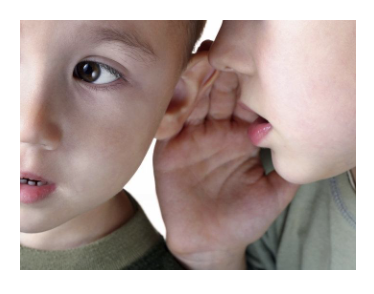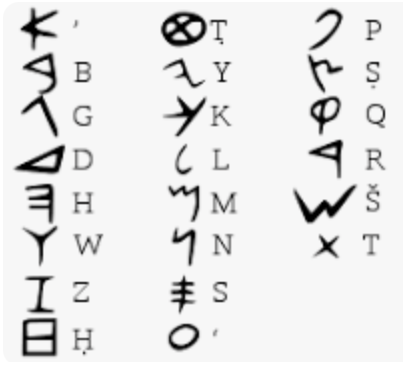Oral Language and Written Language Are Not the Same Things: Why the Distinction Really Matters When Teaching Literacy to English Learners
Among the most wondrous things about being human is our ability to use language. We’re not the only beings that communicate, of course, but Homo sapiens use human language, which as the evolutionary biologist Mark Pagel has written,
“…is distinct from all other known animal forms of communication in being compositional. Human language allows speakers to express thoughts in sentences comprising subjects, verbs and objects… Human language is also referential, meaning speakers use it to exchange specific information with each other about people or objects and their locations or actions.” (Pagel, 2017, p. 1; emphases in original)
This is true about human language whether it’s oral or written. But there are key differences between oral and written language that have important implications for teaching students to read and write.
These differences are important for all students; they are particularly important for English learners, students who are learning to read and write in English as they simultaneously learn to speak and understand it.
(To be clear, I am referring to English learners in English medium instruction, which is the type of program in which the large majority of English learners are educated in the US. Bilingual education is preferable for many reasons, but most English learners do not have the benefit of a bilingual program. There should be no inference taken that I favor English immersion instruction for these students.)
Language through Speech or Print
Let’s begin with oral language, or more precisely, human speech. Speech is not language itself but how language is conveyed orally. It’s the spoken expression of language.
As humans, we don’t spend any time worrying about the distinction between speech and oral language. When someone is speaking in a language we understand, we focus on what they are trying to communicate.

Young children communicating
Young children know intuitively that speech communicates meaning, and they seek to understand that meaning. Not so with print.
The History of Human Speech & Language
Aspects of human speech and language have been around for far longer than writing, perhaps as much as half a million years or more longer (Evans, 2015; King, 2013). Humans are wired to learn to speak and to understand spoken speech, just as birds are wired to fly, fish to swim, and so forth.
Given an environment where people are talking, and assuming no brain injury or congenital disability, human babies will learn to speak as they enter toddlerhood. Even before, they will use gestures and signals to communicate, along with verbalizations. There is a communicative imperative with which each of us is born, injuries or disabilities aside.
Famed developmental psychologist T.G.R. Bower observed that it’s obvious we “have some biological predispositions toward speech, … even at birth. Neonates are more attentive to speech than to any other stimulus” (p. 228).
The Emergence of the Written Language
Written language is different. Rather than dating back to the time of the appearance of modern humans around 300,000 years ago, written language first appeared in Sumeria a short 5,000 years ago. The written language was cuneiform, sometimes known as hieroglyphics, which is what the Egyptians used. Cuneiform, or hieroglyphics, represented concepts (picture below).

Cuneiform (left) and hieroglyphics represented concepts
A different type of written language emerged somewhat later, one in which speech sounds were represented by letters. This phonetic writing system—”phoenetic” from the Greek phonein—”to speak clearly”—was courtesy of the Phoenicians (Mark, 2011) (see pictures below).


Examples above of phonetic writing
Writing systems—“the physical manifestation of a spoken language” (Mark, 2011)—are a relatively recent arrival in human history. They are cultural inventions rather than part of human evolution. We don’t intuitively understand that print represents sounds that then carry meaning. We are certainly not born with a literacy imperative.
There are societies without written language and situations with nonliterate environments where there are nonliterate children and adults. In contrast, human speech and oral language is universal; there are no known alingual societies (Bright, 2022).
We take written language for granted because it is so ubiquitous in our world, but we should not underestimate the challenge of helping all individuals acquire literacy. We can’t assume that literacy will somehow happen by itself, even if we were to flood every last home, school, and community with mountains of books.
Book flooding would be a welcome development. But alone it would not accomplish universal literacy.
Literacy—the ability to read the printed text and produce written language—needs to be taught.
Literacy is not acquired “naturally” as is oral language, although there are certainly instances of children who appear to learn to read naturally, by themselves, with virtually no human interaction. These are the exceptions; different studies provide estimates ranging from one to seven percent of children. But even here some amount of instruction or help, often at the instigation of the child, is probably necessary for so-called “precocious” or “early” readers to understand comprehensively how speech sounds are represented in print (Olson, Evans, & Keckler, 2006).
The “Speech to Print” Connection: How to Teach All Children to be Literate
To become literate, all students need to learn how speech sounds are represented in print. There is simply no getting around this. The “speech to print” connection (Moats, 2020) it the gateway to literacy.
Children vary enormously in how much help or instruction they need. Some need very little; others need a great deal; the majority are somewhere in between. This range of difficulties students experience in learning to read is common across all languages (Fletcher et al., 2019). Moreover, full literacy requires the ability to process print—written language—very quickly, efficiently, and automatically, what the neuroscientist Mark Seidenberg calls “language at the speed of sight” (Seidenberg, 2017).
Regardless of the range of difficulties students encounter, students who are proficient in the language they are learning to read enjoy advantages: The sounds of the language are familiar and the words are already meaningful, though as noted, it’s more straightforward for some than for others.
In general, students who know the oral language learn letters, corresponding sounds, and how to use phonics and decoding skills to read words. They can typically then use their knowledge of the words they are learning to read (e.g., see, run, I, can) to help them recognize words, confirm their accuracy (“does that word make sense there?”), and gain useful practice in connecting speech to print with a steadily increasing repertoire of words and text.
Language Development for English Learners
English learners need to learn exactly the same thing as English speakers in order to learn to read in English—how the speech sounds of English are represented in print.
But the task for English learners is more challenging, and they need an additional and critical area of support: English language development that teaches them unfamiliar sounds of English and the meanings of words and text they are learning to read (Goldenberg, 2020).
Without this support, at best they can learn to read by rote. But even this is more challenging, since understanding the words you are reading makes it easier to read and recognize them. As students go up the grades, not understanding words they are reading becomes an ever-increasing barrier to literacy development and to academic and language development generally.
Beyond beginning and early literacy, English learners will need continued support in additional aspects of English language and literacy development, e.g., advanced word recognition skills, morphology, syntax, discourse and pragmatic skills and understandings, and increasing fluency in using these all to navigate written language successfully. Background knowledge also becomes increasingly important for both oral and written language competence as students progress through school.
There are other differences between oral and written language, of course, differences in style, construction, and register, among others. But from the standpoint of learning to become literate, the most fundamental difference has to do with how spoken language and written language are acquired.
Particularly in the case of a first language, acquisition is generally natural and effortless. Learning written language, particularly one you are simultaneously learning to speak and understand, is not natural and rarely effortless. For both English speakers and English learners, the foundational skills that connect speech to print (i.e., phonological awareness, letters and sounds, phonics, decoding, basic spelling patterns, and fluency with all) are essential—necessary but not sufficient. A great deal more is needed for full literacy, but being without solid foundational skills is like living in a building without a solid foundation—possible but risky.
Special thanks to David Burns for his helpful feedback on a previous version.
References
Bower, T.G.R. (1979). Human development. San Francisco: W.H. Freeman.
Bright, W. (2022). What’s the difference between speech and writing? Linguistic Society of America. https://www.linguisticsociety.org/resource/whats-difference-between-speech-and-writing
Evans, V. (2015, Feb. 19) How Old Is Language? Psychology Today. https://www.psychologytoday.com/us/blog/language-in-the-mind/201502/how-old-is-language
Fletcher, J., Lyon, G., Fuchs, L., & Barnes, M.. (2019). Learning disabilities: From identification to intervention (2nd ed.) New York: Guilford.
Goldenberg, C. (2020). Reading wars, reading science, and English Learners. Reading Research Quarterly, 55(S1), S131–S144. https://ila.onlinelibrary.wiley.com/doi/abs/10.1002/rrq.340
King, B. (2013, Sept. 5) When Did Human Speech Evolve? National Public Radio. https://www.npr.org/sections/13.7/2013/09/05/219236801/when-did-human-speech-evolve
Mark, J. (2011). Writing. World History Encyclopedia. http://www.ancient.eu/writing/
Moats, L. (2020). Speech to print: Language essentials for teachers (3rd ed). Baltimore, Md.: Paul H. Brookes.
Olson, L., Evans, J., & Keckler, W. (2006). Precocious readers: Past, present, and future. Journal for the Education of the Gifted, 30(2), 205–235.
Pagel, M. (2017). Q&A: What is human language, when did it evolve and why should we care?. BMC Biol 15, 64 https://doi.org/10.1186/s12915-017-0405-3.
Seidenberg, M. (2017). Language at the speed of sight. New York: Basic Books.
*****
Illuminate Education equips educators to take a data-driven approach to serving the whole child. By combining comprehensive assessment and MTSS management and collaboration tools, the Illuminate Solution enables educators to accurately assess learning, identify needs, align whole child supports, drive system-level improvements, and equitably accelerate growth for every learner.
Ready to discover your one-stop shop for your district’s educational needs? Let’s talk.

